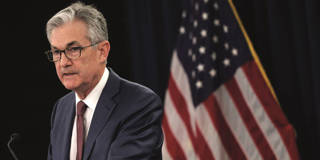Throughout 2021, top US economic policymakers held policy positions and deployed political rhetoric reminiscent of some of the darkest episodes of modern economic history. Leviathan is resurfacing, and it is bringing inflation with it.
CAMBRIDGE – One almost had to feel sorry for US Federal Reserve Chair Jerome Powell when, in congressional testimony this September, he expressed frustration at the inflationary pressures affecting the American economy. On the plus side, he finally acknowledged the existence of inflation that would last for more than a few months.

CAMBRIDGE – One almost had to feel sorry for US Federal Reserve Chair Jerome Powell when, in congressional testimony this September, he expressed frustration at the inflationary pressures affecting the American economy. On the plus side, he finally acknowledged the existence of inflation that would last for more than a few months.